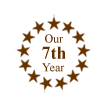.
Continued from product description on
Folk Instruments' Page One...
Historical
Background: The Jew's Harp or Jaw Harp (5002) is a small
musical instrument held between the player's teeth or against
the lips and plucked with one or more fingers. It has been debated
since 1511 as to whether the Jew's Harp is a percussion or chromatic
instrument. Music scholars Fredrick Crane and Ole Kai Ledand
support an earlier notion proposed by Marin Mersenne, a 17th-century
musicologist. Mersenne's ideology subscribes to the classification
of the Jew's Harp as an aerophone since the "full functioning
of the instrument occurs only when a stream of air moves past
its tongue."
The name Jaw Harp is a bit of a misnomer and does not hold
much scholastic merit. For 400 years, this instrument has been
connected in English with Jews and called a Jew's Harp (or Jews'
Harp) since its earliest known mention in 1595. Prior to this,
it was referred to as a "jewes trump" (Jew's trump).
In Scotland and Northern Ireland, it was simply called a trump.
The origin of "jewes" is unknown. Regardless, the proper
name according to the Harvard Dictionary of Music is Jew's Harp
despite today's popular use of the name Jaw Harp.
Actually, the world has given this "mouth harp"
dozens of names. Germans call it "maultommel," which
means "mouth drum." In Japan, it is called "koukin."
Russians call it "vargan" (except in Siberia where
it is called "khomus"). In the Philippines, it is called
either "kumbing" or "kubing." Italians use
the name "scacciapensieri" while the French go with
the name "guimbarde." In Norway, it is called a "munnharpa"
(sometimes spelled "munnharpe"). Even in England, the
name "gewgaw" is also used for jew's harp. And, as
a last example, on the Indonesian island of Bali, it is called
a "genggong."
In the past, these instruments have been made from wood or
iron. A 1,000-year-old iron koukin was found in Japan in 1990.
Maultrommel frames have been discovered in Germany dating back
to the 1400s. These are considered by some to be the oldest examples
in Europe. However, there have been considerable quantities uncovered
from earlier periods (Anglo-Saxon and Carolingian). By the 16th
century, Jew's Harps were a common item of a peddler's stock
of goods.
The Jew's Harp is actually native to many other parts of Europe,
Asia, and Oceania (except for Australia). And with the exception
of Eskimo tradition, no evidence (so far) suggests this instrument
existed in North and South America or Africa prior to its introduction
by European traders.
The Jew's Harp was introduced to the New World (specifically
South America) in 1593 by a Spanish exploratory party. Five hundred
Jew's Harps were part of a transaction used to acquire land from
the natives. This is not the only occurrence of Jew's Harps used
to obtain land. They were also part of a trade deal with Native
Americans to purchase Maryland. A land deed dated 1677 lists
100 Jew's Harps as part of the payment for a tract of Indian
land. Jew's Harps continued to be used to barter with Native
Americans until the early 1800s. Archaeologists have discovered
17th- and 18th-century Jew's Harps among native artifacts from
Maine to Florida. One archaeological site in Michigan produced
more than 120 Jew's Harps!
When an old Jew's Harp was found, it usually was broken with
the tongue missing. The majority of Jew's Harps from the North
American Colonial period have been found in rubbish heaps and
at the bottom of wells. Their quantities and condition suggest
they were discarded as useless, which further suggests Jew's
Harps were not only popular, but played until they broke -- and
in significant numbers!
The Jew's Harp is considered by some Americans to be a "hillbilly"
instrument used by backward frontier folk. This is certinly not
the case for Europeans. In fact, the Jew's Harp was a respected
instrument (even by royalty!) and held a remarkable prominence
in Western European music well into the late 1800s. Some of Europe's
virtuosos with the Jew's Harp include Benedictine monk Father
Bruno Glatzl, Karl Eulenstein, and Franz Koch. During his lifetime,
Eulenstein was considered one of the finest performers in London
and played for such English nobility as the Dukes of York, Queen
Victoria's mother (the Duchess of Kent), and the King of England!
One should not believe the Jew's Harp is something only a
"hillbilly" plays. Even one of Ludwig van Beethoven's
music teachers wrote a number of concertos for the Jew's Harp.
His name was Johann Georg Alberchtsberger, an Austrian composer
and organist who succeeded Wolfgang Amadeus Mozart (at Mozart's
request) as the assistant to the Kapellmeister of St. Stephen's
Cathedral in Vienna.
No matter what you call it, this instrument is fun to play.
With enough practice and patience, one can become a virtuoso
and perhaps even perform for royalty!
Fun
Fact: The ironworks at Saugus, Massachusetts (near Boston),
started producing Jew's Harps as early as 1650.
Fun
Fact: The Jew's Harp has been associated with shamanism
by Siberian and Mongolian cultures.
Fun
Fact: Jew's Harps were introduced to European recital
rooms around 1750 by Johan Heinrich Hörmann in his compositional
setting "Partita in C."













